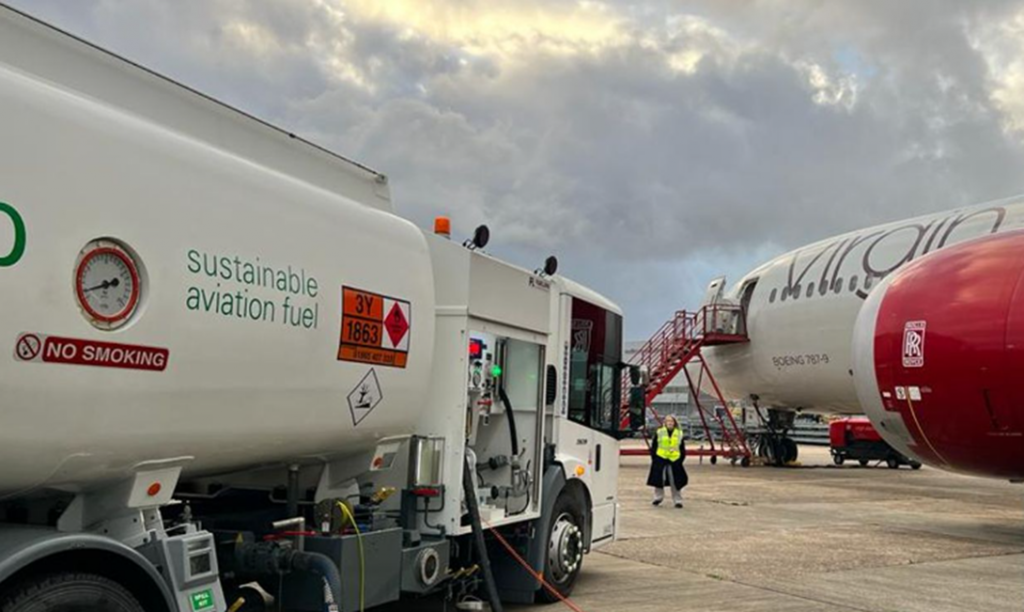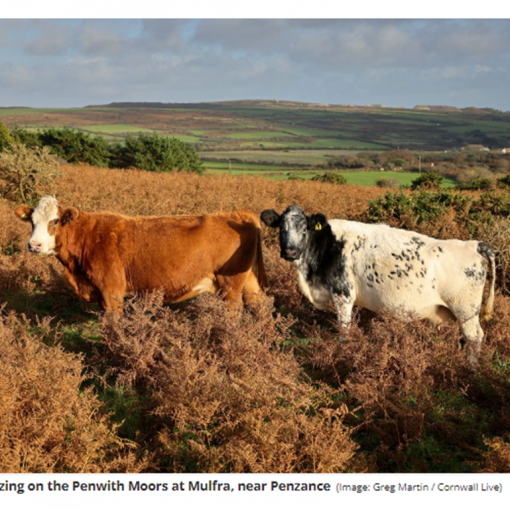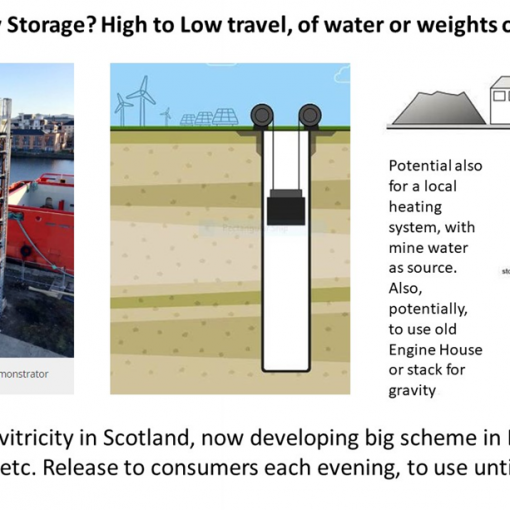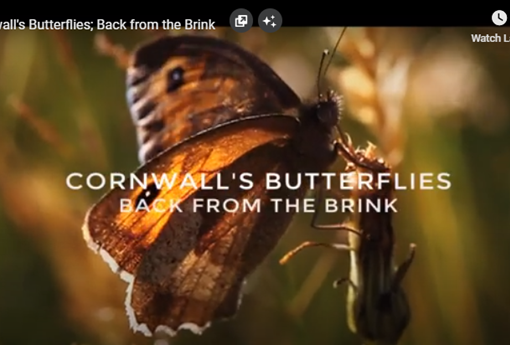1st December
Winter kicks in, with inevitable thoughts of Christmas spending. Then comes a rag bag of good news stories, and a cautious welcome, tempered by skepticism, re COP28.



Snow came, Thursday 30th November. Kids off school, having a great time and wondering, does it mean Father Christmas could be coming around the corner? Fine for them, they don’t have the pressures of adults, trying to make emergency childcare arrangements and plan how to deliver all the goodies of a Festive season on a shoestring. This year might be the hardest in a very long time, after the past 12 months of runaway inflation and energy costs. If anything has to be cut out, what could it be?
Food-wise, I suggest that far greater restraint could be exercised over sweets and crisps and drinks. And portion sizes probably are very open to reduction! Toys, well I am not one to comment, with no youngsters in my life (my son is soon to be 32 years old!). But the vast choice of cheap, plastic ‘tat’ I see online makes my heart sink. How did we get to such a point? Who is going to take care of recycling, when many of those harder type plastics are not suitable? GRR.
I have never made much of decorating the house, just a bit of tinsel here and there and my mini, mini tree. That IS a topic worthy of thought, as it happens. A Radio 4 programme ‘Sliced Bread’ poses the question:-
Which Christmas tree is better for the environment – real or fake? Everyone loves the smell of a freshly cut pine or spruce but the vast majority of them go to landfill. So would a plastic tree be better? Listener Eleanor wants to have a more sustainable Christmas and has some great questions. Is there a better way to dispose of your real tree? How about a pot grown tree you could use again the next year? And she’s even heard about the possibility of renting a Christmas tree – the same one, year after year! Is that a thing? In this frankly festive episode I attempt to get to the root of the problem (sorry!) by speaking to an ecological expert and a journalist who’s attempted to rent the whole of Christmas. Presenter: Greg Foot Producer: Simon Hoban
https://www.bbc.co.uk/sounds/play/m001svkh
Scientist, Dr Paul Caplan, tells us about the market for living Christmas trees, how to calculate their carbon footprint and the main elements that can make a difference. The way you dispose of a real tree is very important; burning is bad as it releases all the stored carbon, but putting into local landfill is even worse. Better would be to chip it up and allow the fragments to rest on the soil as mulch or if possible opt for a growing tree in a pot and keep using it year after year. Another option would be to rent a living tree and return it in January – who knew? Journalist, Anna Tyzack, published an article on renting the tree and almost everything else, last year. In London, renting seemed a reasonable option, but in Devon just getting a locally farmed tree is far better value. Over the entire enterprise she calculated she had saved over £2,000 by renting!!! If you can’t access the written article, much of the content is covered in the radio programme.
As for plastic trees, the majority will never be acceptable because they have not been designed to recycle. They can have anything from 2.5 to 10 times greater Carbon Footprint than a real one. However, if you keep using the same one for about 20 years, then the carbon footprint may become more comparable with, or even better than the live tree. That is kind of where I sit in the spectrum and knowing it can’t be recycled encourages me to stick with the old thing.
Response to Greener NHS
Readers appreciated last week’s inside info about how doctors and managers are striving to do better. And one person picked up especially on the poster in my local surgery, where I had unfortunately cut off the recommendations for disposing of used inhalers. There is no magic new scheme, I’m afraid. Just the following: – https://www.recyclenow.com/recycle-an-item/inhalers
Nuggets of Good News

Let’s begin with the headline news of an aircraft flying the Atlantic on biofuel, of which a high proportion was used cooking oil. That means the same Hydro Treated HVO I have been going on about for months. Friends sent me the news, having seen TV reports, from all different directions. Thank you for noticing, folks!
Richard Branson, Virgin Atlantic and his £s or $s were behind this scheme, so of course he had every reason to BIG it up. But a second expert voice provided a more balanced view, which I welcomed. I filmed most of his interview, so rather than write more just suggest you have a watch. Email to request a longer version, if you would like it.
The best thing about this feature is having greatly increased awareness ensuring that fuel of this nature can become much more widely known and sought after.
Self-Heating House
This is not by any means a new story, but I only now came across it in a Grand Designs repeat and consider it sufficiently unusual to warrant a mention now, especially for anyone planning a new subterranean build, whether whole house or extension.
We have looked at underground Earthship designs a few times, but this goes much further in the way it takes 2 or more years to heat the ground around a house and adds in a number of extras, including Solar Thermal water into underground pipes, 14 independent zones each able to be independently heated or cooled and more.
Alternative solutions to ‘Desal’ in semi desert areas
A story came to me about Arizona (you may remember I have friends over there) describing a means of significantly reducing evaporation of fresh water, in the hottest hours of the day whilst also generating green power: – https://www.euronews.com/green/2023/11/27/arizona-is-building-the-first-solar-canal-in-the-us-what-are-they-and-how-do-they-work

What I particularly appreciate above is the phrase ‘climate resiliency driven by Tribal leadership’ (‘resiliency’ must be more American, surely we would simply say resilience?).
When I saw that, I had to take a look into the GILA River Indian Community and their input and found a long history with much injustice and sadness in it, but also hope.
Circa 300 B.C across south-central Arizona the Sonoran Desert became surprisingly fertile, receiving waters of the Gila River, when the Huhugam tribe constructed some 500 miles of large canals (on average 10 feet deep and 30 feet wide!) linked to smaller ditches, so watering thousands of acres of farmland. Transforming the desert into gardens, the Huhugam grew cotton for clothing, rugs and other textile products, and crops of corn, melons, beans, fruits, tobacco and other foods. They supplemented these crops with game, mesquite beans, agave, cactus fruit and other foods gathered locally from the wilds or in trade, enabling them to settle into large population centres. Here their arts flourished, including production of fine pottery and jewellery, the latter worked with imported shell and other materials.
During the Huhugam’s “Classic Period” (circa A.D.1150-1450), this lifestyle apparently supported between 50,000 and 60,000 people, with some villages holding several thousand residents and containing large public buildings (formed largely of adobe), religious centres and sunken clay courts where an exciting, ritualistic ball game was played. But around A.D.1450, for unknown reasons, the urban centres were abandoned. Perhaps there was an extended drought, or pressures brought by the arrival of new Native peoples to the region (foremost the fierce, nomadic Apache) or a loss of public faith in leadership. At any rate, the Huhugam culture dispersed.
in 1859 Congress established the first Indian reservation in Arizona, encompassing 372,000 acres along the Gila River. In 1862, putting our agricultural skills to work, our people grew more than one million pounds of wheat, most of which we sold. Our prospects looked good.

However, our lifeblood – Gila River water – was cut off in the 1870s and 1880s by construction of upstream diversion structures and dams by non-Native farmers, and our farming was largely wiped out. From 1880 to 1920 or so, we faced mass famine and starvation. The federal government stepped in and doled out canned and processed food by the ton. The change in diet proved disastrous, leading to extremely high rates of obesity and diabetes – a condition we still face today. With almost no jobs available on the reservation, and the loss of our cash crops, our people faced widespread poverty as well. Alcoholism raised its ugly head, and we experienced the loss of certain cultural and artistic traditions and rituals. It was the darkest moment in our long history.
But, we proved resilient and eked out a marginal existence for several precarious decades. Conditions finally began to improve in the 1930s, when the U.S. government completed Coolidge Dam on the upper Gila River, creating the San Carlos Reservoir. The project included a canal and pipe system to deliver some of this lake water to our reservation, restoring a portion of our farming practices. This was the beginning of a long climb out of the economic trenches. Men began to find work off the reservation following World War I and World War II as the introduction of cars made travel to booming Phoenix possible. Eventually, small businesses began to appear on the reservation as well, launched both by the community and individual tribal members. Schools, health centres and new housing appeared. Income levels slowly grew and famine was erased. These trends continue today as the Gila River Indian Community looks toward a promising future.
I accept that this native Indian story is off at a slight tangent, not simply a tale of progress towards sustainability. But the wider issues are by no means irrelevant. Increasingly, we are hearing that indigenous peoples offer intuitive, sensitive new approaches to help protect the planet and local environment. Our lack of respect in the past is so shameful, let us never repeat it.
Next on our Desal journey – anyone can sign up to the following news emails
(please skip over if not local to mid Cornwall)
From: Par Desalination Information <pardesal23@gmail.com>
Sent: Thursday, November 30, 2023 4:35 PM
To: undisclosed-recipients: Desalination at Par …keeping you informed
Thank you to everyone who attended the discussion meeting at Gott Hall on 23rd November and those who could not attend but have requested updates. We promised to keep you updated regarding any meetings arranged by South West Water (SWW) so you can share your views, ask questions and hear their plans.
There’s a lot happening in December!
· Online Environmental Stakeholders Briefing – Monday 4th December, 15.00-16.00 via MS Teams (link to be provided)
· Online Community Groups Briefing – Wednesday 6th December, 18.00-19.30 via MS Teams (link to be provided)
To attend either of these online briefings, email info@SWWdesalination.co.uk who will add you to their attendee list and share the Teams link with you nearer the time.
SWW Face-to Face DROP-IN PUBLIC MEETINGS – DATES FORMALLY ANNOUNCED THIS MORNING
· Monday 11th December, 16.00-19.00, Alexander Hall, Middleway, St Blazey, Par PL24 2JH
· Tuesday 12th December, 16.00-19.00, Church Rooms, Church Lane, Lostwithiel, PL22 0DA
South West Water say ‘The views of our customers and the local community are very important to us. We are listening and want your feedback, which will help shape the final plans. We welcome you to join us’.
Make sure you register for the online meetings and we hope you can attend the face to face meetings at St Blazey and Lostwithiel – see you there!
We’ve attached the presentation we made at the meeting last week in case you’d like to refer to it and/or share it with a friend who could not attend.
Sharing is caring! Please feel free to forward this email to anyone you know who might like to be better informed about the proposed desalination plant.
COP 28
Was there ever a more controversial setting for a Council of the Parties climate gathering? How can we trust a Chair who is simultaneously the main minister for selling oil?!
Greta says all such events are ‘Blah, Blah, Blah’ e.g. hot air and not worth a fig. I for one was pleased to see King Charles take the stage and open proceedings, his many years of campaigning making him so much more qualified than the bad boy Rishi, who only managed to attend for half a day and obviously cannot hold his head high following those decisions rowing back on everything from coal, oil and gas to phasing out of petrol and diesel cars.
KING CHARLES – text and summary of further points
I have seen countless communities unable to withstand repeated shocks, whose lives and livelihoods are laid waste by climate change. SUMMARY Balance the environmental economy, in order to balance our own.
Here I quote from a Guardian report, which continues from the speech, providing the most up to date story I have found today. And some of it has glimmers of good news. I shall of course report more next time.
More countries came forward on Friday with contributions to a fund for loss and damage, announced on the first day, which will help rescue and rehabilitate vulnerable countries stricken by climate disaster. Some developing countries told the Guardian the $420m of finance so far agreed was not all it seemed, with some funding appearing to be repurposed from existing aid and some taking the form of loans. Saudi Arabia was also rumoured to be considering contributing to the fund, which would be a first for the oil-producing state.
World leaders signed a declaration on transforming food systems – the first Cop resolution that directly tackles the symbiotic relationship between what people eat and the changing climate. The resolution recognises that “unprecedented adverse climate impacts are increasingly threatening the resilience of agriculture and food systems as well as the ability of many, especially the most vulnerable, to produce and access food in the face of mounting hunger, malnutrition and economic stresses”.
More than 100 countries signed the declaration and committed to including food and land use in their climate plans by 2025. The declaration was widely welcomed by small-scale and indigenous farmers – who produce a third of the world’s food – as well as food rights campaigners, consumer associations and small business groups.




